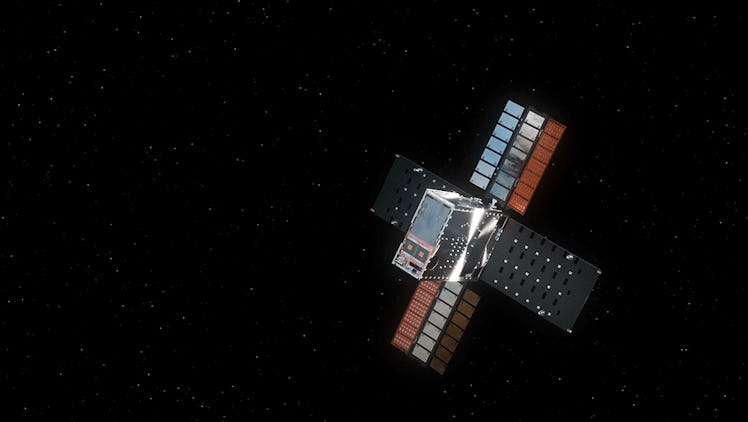Watch SpaceX's Rocket Moon And NASA's Lunar Flashlight With Your Kids
Here’s what you need to know about the new mission to the moon.

The world of space science is really exciting right now because there have been a lot of big developments. Not only do we have the James Webb Space Telescope that shows us parts of the world we’ve never seen, but there have been rocket launches, the unmanned Orion mission, and now another SpaceX moon mission in which NASA and SpaceX are working together to do something super cool.
If you and the kids love space things, here’s what you need to know about the new mission to the moon, including how you can watch in real time.
On Sunday, December 11, just after 2:30 a.m. EST, NASA launched a SpaceX Falcon 9 rocket from Cape Canaveral Space Force Station in Florida. Inside that rocket was a small briefcase-size SmallSat, NASA’s Lunar Flashlight, which dispensed from the satellite 53 minutes after launch and en route to a four-month journey to the Moon.
How To Explain the NASA And SpaceX Moon Mission
Simply put, the Lunar Flashlight is going to measure the amount of ice and water on the moon.
“Roughly the size of a briefcase, Lunar Flashlight is a very small satellite being developed and managed by NASA's Jet Propulsion Laboratory that will use near-infrared lasers and an onboard spectrometer to map ice in permanently shadowed regions near the Moon's south pole,” NASA explains.
The Lunar Flashlight’s observations will provide details about the presence of ice water inside the craters on the Moon. These details could potentially be valuable information for the future Artemis mission, where humans will walk on the Moon.
Barbara Cohen, Lunar Flashlight’s principal investigator from NASA’s Goddard Space Flight Center, explains the mission in somewhat more complicated terms for the small but mighty flashlight: “We are using four infrared lasers in different infrared wavelengths to search for definitive markers of water ice. We use the laser to shine onto the surface of the moon. At certain wavelengths, ice will absorb those wavelengths, but rock or regolith will reflect them.”
Those reflections will help NASA determine how much ice there might be on the moon’s surface, and the distribution of surface water on the moon, all valuable information for future astronauts.
The launch appears to have gone off without a hitch. “It was a beautiful launch,” John Baker, the Lunar Flashlight project manager at NASA’s Jet Propulsion Laboratory in Southern California, said, according to NASA. “The whole team is excited to see this small spacecraft do some big science in a few months’ time.”
How To Watch The Lunar Flashlight Mission
NASA says that the Lunar Flashlight won’t ever return to Earth, but you can follow along with its adventures in real-time as it heads to the Moon with a 3D, interactive solar system tool. There, you can follow along its journey to the Moon, zoom in, and out, and mess around as the SmallSat makes its way through space.
“Rendered in crisp detail, a 3D digital version of the solar-powered SmallSat has made its debut in NASA’s Eyes on the Solar System,” the agency says. If that’s not cool enough, the SmallSat isn’t the only satellite on the digital map. You can also check out other spacecraft on various missions around our great universe.
This article was originally published on